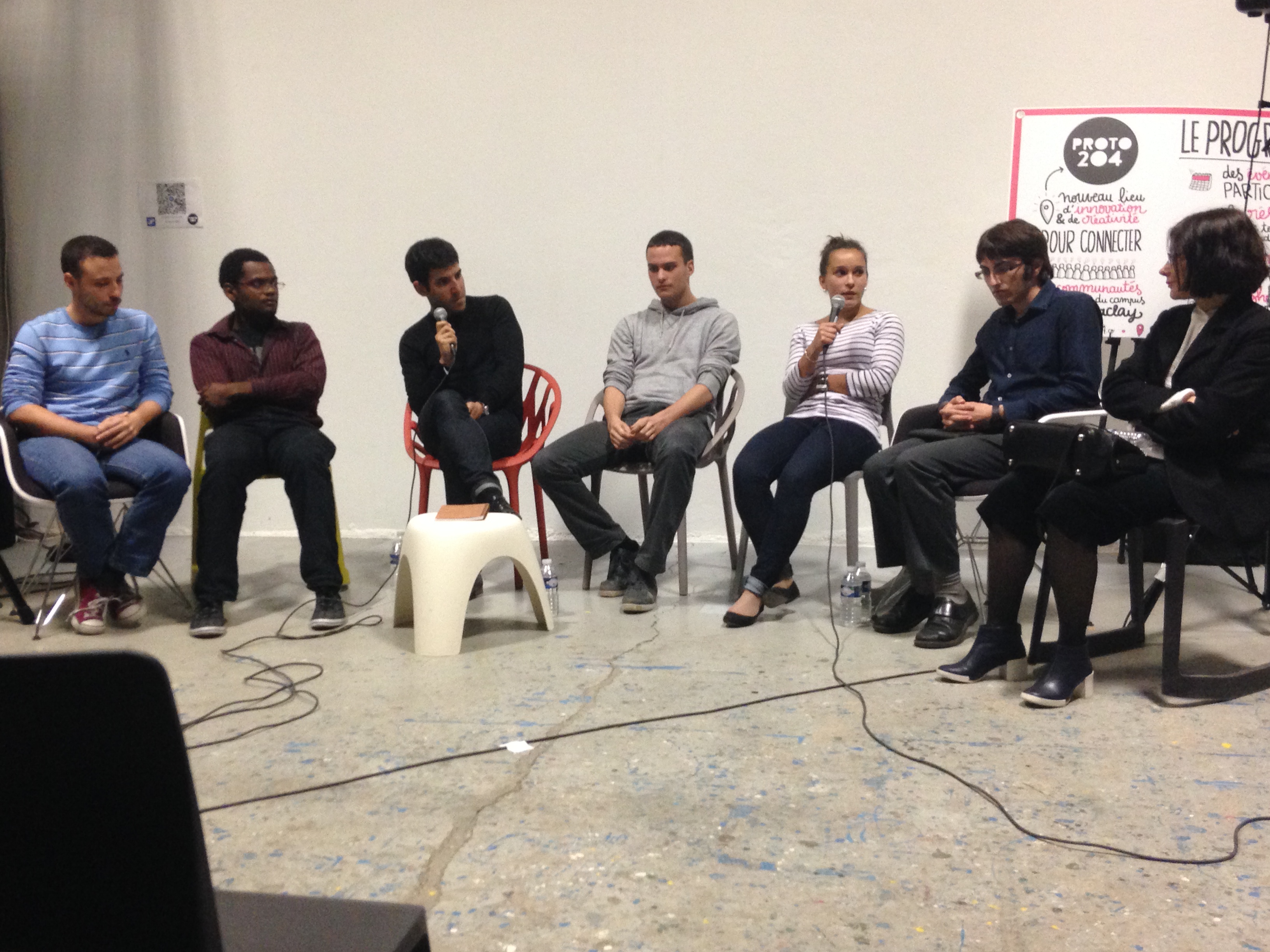Team:Paris Saclay/Outreach/Events/Curiositas
From 2014.igem.org
(→Curiositas) |
(→Curiositas) |
||
| Line 8: | Line 8: | ||
Curiositas, held in Orsay, was an art and science festival that took place on October 4th to 9th. During a dynamic and constructive debate about bioart and bioethics, our team talked with Marion Laval-Jeantet, artist and promoter of the festival, the Parisian iGEM teams (Paris Bettencourt and Evry teams) and the audience. The debate was facilitated by a mediator, Alexandre Peluffo, biologist and ethics student. | Curiositas, held in Orsay, was an art and science festival that took place on October 4th to 9th. During a dynamic and constructive debate about bioart and bioethics, our team talked with Marion Laval-Jeantet, artist and promoter of the festival, the Parisian iGEM teams (Paris Bettencourt and Evry teams) and the audience. The debate was facilitated by a mediator, Alexandre Peluffo, biologist and ethics student. | ||
| - | |||
| - | One of the questions of the debate was the definition of life. The subject was introduced by a quote from biologist François Jacob "There is no life in labs". This definition is the center of artistic work, Marion Laval-Jeantet said, and different artists' visions create different definitions. | + | Every IGEM team described their projects and Marion Laval-Jeantet went back over her artistic project : she has injected herself with horse blood plasma. The ultimate goal was to explore trans-species relationships: the project was more artistic and sentiment-oriented than purely scientific. Initially, the blood came from a panda to have a critically endangered species in her body, but it was controversial because all panda realted projects require the authorization of the Chinese government. The theoretical part was done in a French lab to purify horse blood and separate all immunoglobulins. She prepared her body to accept different horse immunoglobulins over the course of several months before the real injection of horse blood plasma. This in vivo part can't be made in France, because the European Union has a strong legislation on experiments using animal-based products in human medicine and other areas like art, this part was made in Switzerland. This project was a success and this experiment provided data for many studies on immunoglobulin use in medicine. |
| + | |||
| + | |||
| + | One of the questions of the debate was the definition of life. The subject was introduced by a quote from biologist François Jacob "There is no life in labs". This definition is the center of artistic work, Marion Laval-Jeantet said, and different artists' visions create different definitions.Other views of our ethic reflection were brought up, which allowed us to collect complementary viewpoints from different participants and from the public's questions. | ||
[[File:Paris Saclay curiostias3.JPG|300px|center|]] | [[File:Paris Saclay curiostias3.JPG|300px|center|]] | ||
{{Team:Paris_Saclay/default_footer}} | {{Team:Paris_Saclay/default_footer}} | ||
Revision as of 20:47, 17 October 2014

Curiositas
Curiositas, held in Orsay, was an art and science festival that took place on October 4th to 9th. During a dynamic and constructive debate about bioart and bioethics, our team talked with Marion Laval-Jeantet, artist and promoter of the festival, the Parisian iGEM teams (Paris Bettencourt and Evry teams) and the audience. The debate was facilitated by a mediator, Alexandre Peluffo, biologist and ethics student.
Every IGEM team described their projects and Marion Laval-Jeantet went back over her artistic project : she has injected herself with horse blood plasma. The ultimate goal was to explore trans-species relationships: the project was more artistic and sentiment-oriented than purely scientific. Initially, the blood came from a panda to have a critically endangered species in her body, but it was controversial because all panda realted projects require the authorization of the Chinese government. The theoretical part was done in a French lab to purify horse blood and separate all immunoglobulins. She prepared her body to accept different horse immunoglobulins over the course of several months before the real injection of horse blood plasma. This in vivo part can't be made in France, because the European Union has a strong legislation on experiments using animal-based products in human medicine and other areas like art, this part was made in Switzerland. This project was a success and this experiment provided data for many studies on immunoglobulin use in medicine.
One of the questions of the debate was the definition of life. The subject was introduced by a quote from biologist François Jacob "There is no life in labs". This definition is the center of artistic work, Marion Laval-Jeantet said, and different artists' visions create different definitions.Other views of our ethic reflection were brought up, which allowed us to collect complementary viewpoints from different participants and from the public's questions.
 "
"





